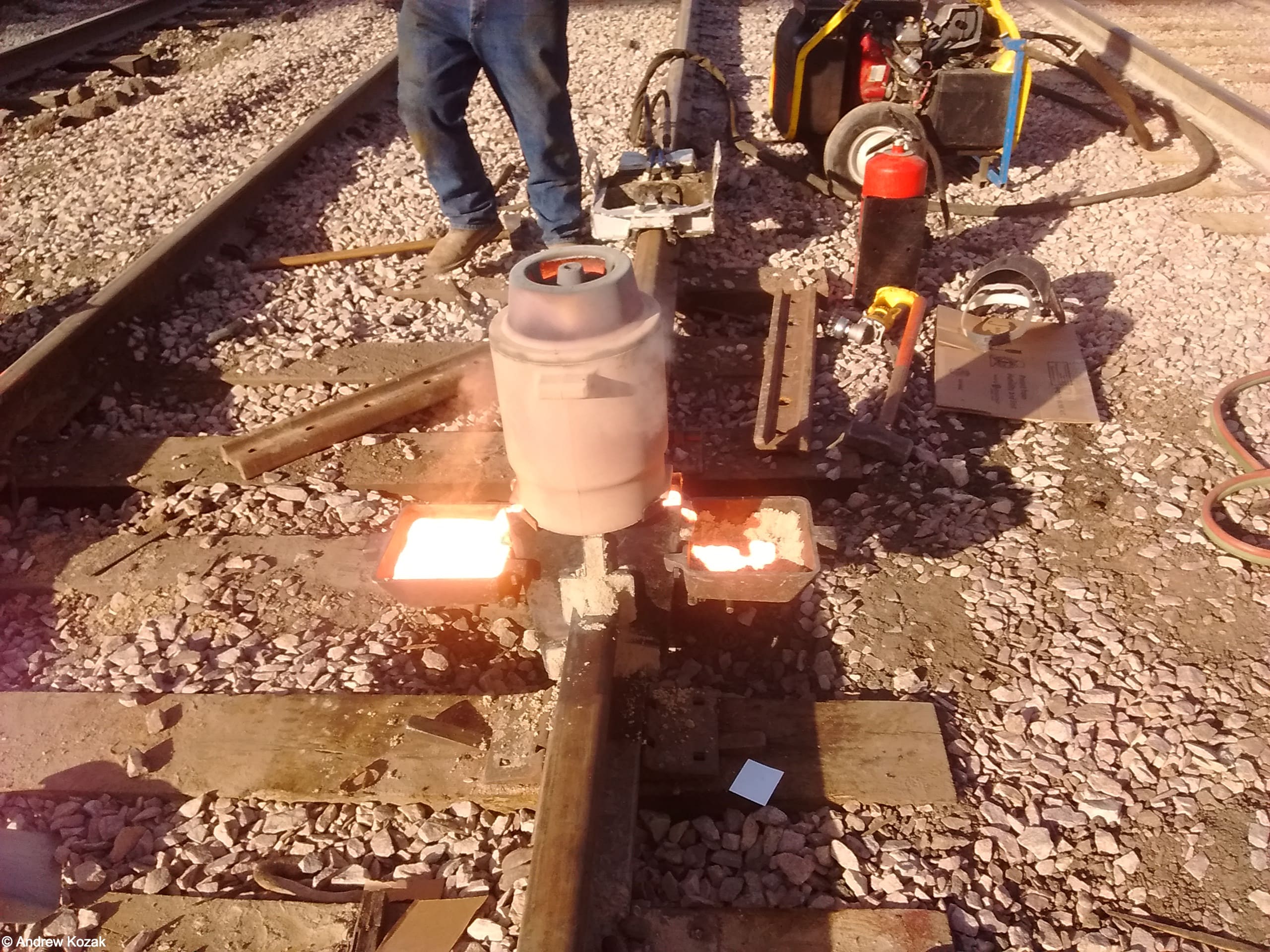
Why Are Railroad Track Maintenance Necessary?
Part of the success of any form of infrastructure is regular and consistent maintenance to ensure each integral part is acting as it should. When this isn’t being achieved, a myriad of issues and potential dangers can arise. This can affect not only the engineers and operators related to the infrastructure but also the citizens who use and exist around it. That’s why regular track maintenance is so important.
When it comes to maintaining railroads, the dangers can be devastating to the wealth of those utilizing the tracks for shipping. And in the case of public transit, the risks involve the lives of each and every passenger onboard. Hence the absolute necessity of regular track maintenance.
Here are the aspects of train tracks which need maintenance, and the potential results of not maintaining them.
Why Track Maintenance Is Necessary & What They Inspect
The first step in maintenance, and arguably the most important. Inspecting railroad tracks can give us an idea of the health of the track, and where issues may arise. Ideally the inspection should find issues well in advance, although that isn’t always the case.
How they Inspect the Track
There are a few typical methods that track inspectors will use to determine the condition of the track and its components. These are usually referred to as Non-destructive testing (NDT) methods.
Inspection Techniques
These are:
- Ultrasound – the most popular method of testing which uses Ultrasonic Testing Units (UTU)
- Visual inspection – usually achieved with a camera to detect breaks or cracks in bolted rail
- Liquid Penetrant Inspection LPI) – used to manually inspect rail ends and joint bars
- Eddy current inspection – used for finding surface flaws
- Radiography – used on predetermined location to find thinks like bolt holes where thermite welding was used
- Magnetic Particle Inspection (MPI) – used for detailed inspection
- Magnetic induction – the earliest form of rail inspection used
Inspection Methods
Depending on the length of the track different methods may be more suitable.
A common method is using a hand pushed trolley or in a hand-held setup, both of which are suitable for smaller sections or in precise locations. Otherwise, inspection cars and HiRail trucks which have evolved from Dr. Sperry’s model in 1927 has made high mileage inspection much easier. These cars can be outfitted with multiple NDT methods and operate at speeds up to 30 mph.
The frequency of these different forms of inspection depend on how often the track is used, or what it’s being used for.
Why Track Maintenance Is Necessary & What they Look For
Qualified railroad inspectors will have a detailed list of exactly what they’re looking for, but acquainting yourself with the gist of it can be greatly beneficial.
Rail Defects
These are the kinds of things that an inspector is looking for:
- Bending and shear stresses
- Wheel and rail contact stresses
- Thermal stresses and residual stresses
- Rolling Contact Fatigue (RCF) contact stresses like tongue lipping, gauge corner cracking, and squats
- Corrosion
- Inclusions
- Seams
- Shelling
- Transverse fissures
- Wheel burn
Component Defects
These are the parts of a rail where defects can occur:
- Head
- Web
- Foot
- Switchblades
- Welds
- Bolt holes
Most of the flaws found in rails are found in the head, although they’re also seen in the web and foot. When this occurs, the entire rail needs to be thoroughly inspected.
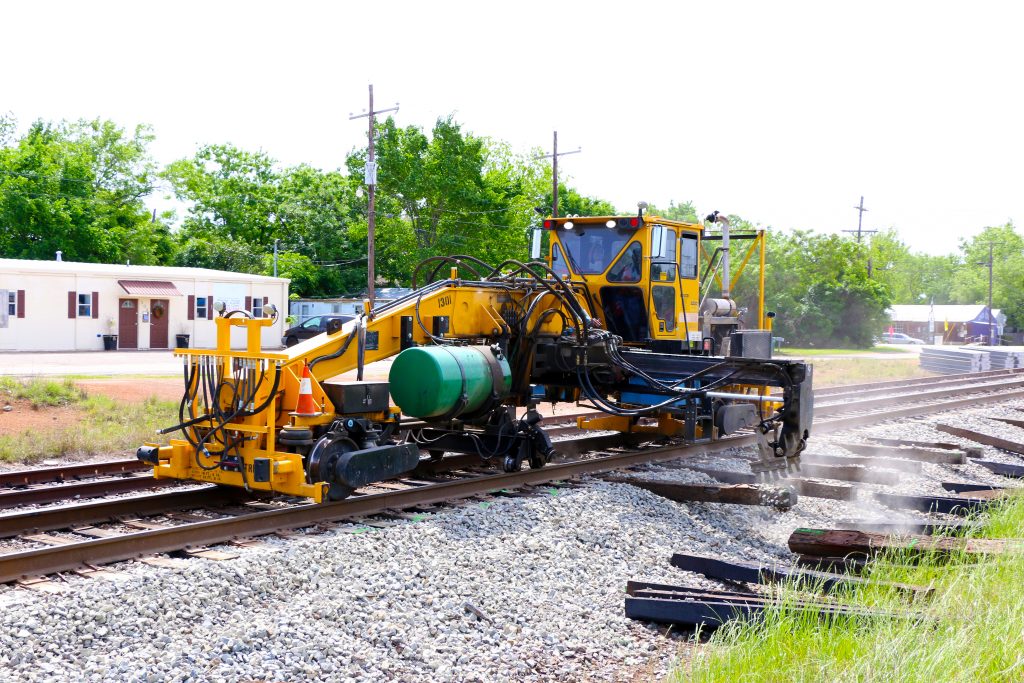
What Is Track Maintenance?
Track maintenance is necessary for keeping your trains running on time, inadequate maintenance may lead to a slow order which can disrupt freight and passenger transport.
In the early days of the railroad industry, railroad maintenance was an extremely labor-intensive task which took a large team of trackmen. They would use lining bars to correct irregularities in horizontal alignment of the track, and tamping and jacks to correct vertical irregularities.
Nowadays maintenance is achieved through the utilization of highly-specialized machines. A common example is the use of a rail grinder to maintain the surface of the head of the rails.
There are a huge variety of different maintenance techniques used to alleviate the many different issues that can occur.
Some common forms of what track maintenance is includes:
- Changing sleepers
- Lubricating and adjusting switches
- Tightening loose track components
- Surfacing and lining track to keep straight sections straight and curves within maintenance limits
- Sleeper and rail replacement which is achieved automatically through track renewal trains
This list can go on and on, the specific maintenance relevant to your track will be dependent on the frequency of use and environmental conditions. Considering all of this can be an overwhelming task, so hiring qualified experts in track inspection and maintenance can save you a lot of time.
Professional Railroad Services – R&S Track Inc.
Here at R&S Track Inc. we pride ourselves on a high quality of service that you can depend on for your railroad needs.
Whether you’re looking for a Midwest railroad contractor or inspector, we’re willing and able to help.
Although we’re based in Nebraska, most of our services are available to North Dakota, South Dakota, Kansas, Minnesota, Iowa, Missouri, Illinois, Wisconsin, Indiana, Michigan and Ohio.
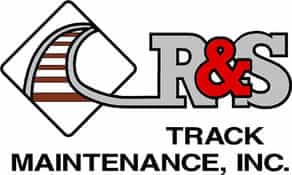
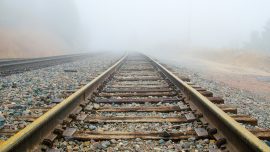
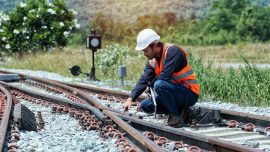
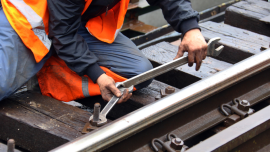
0 comments
Write a comment